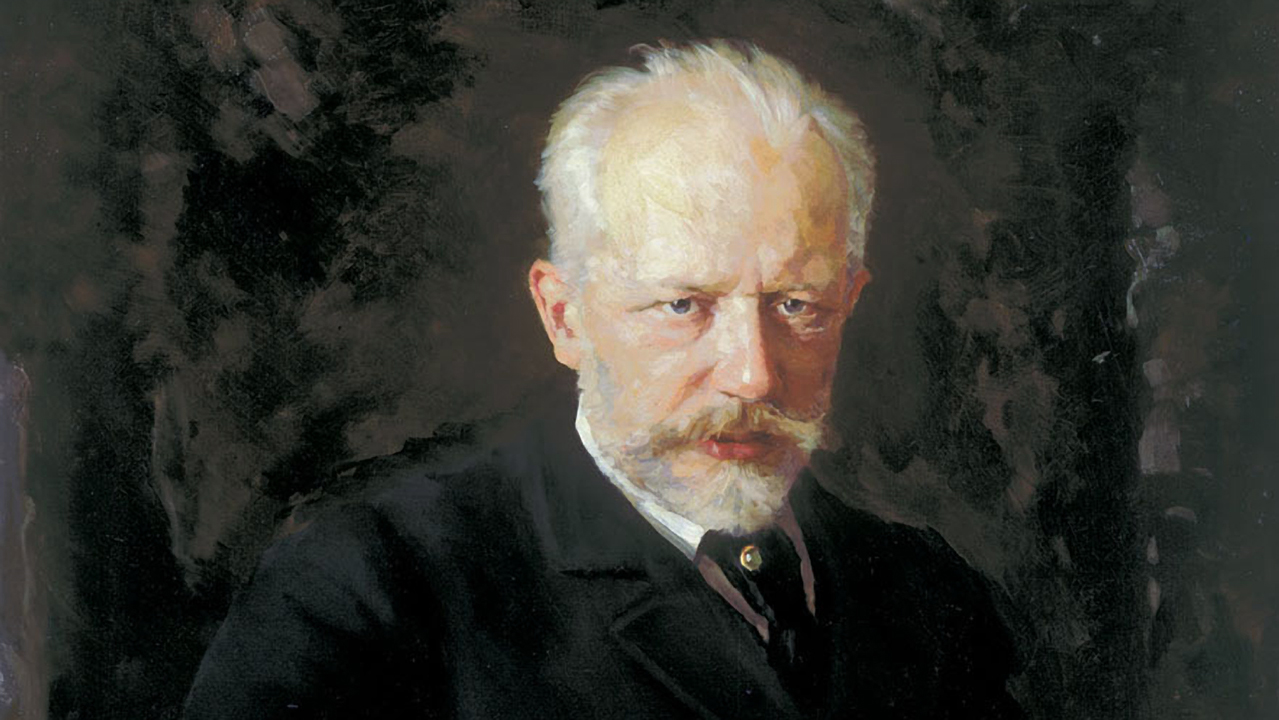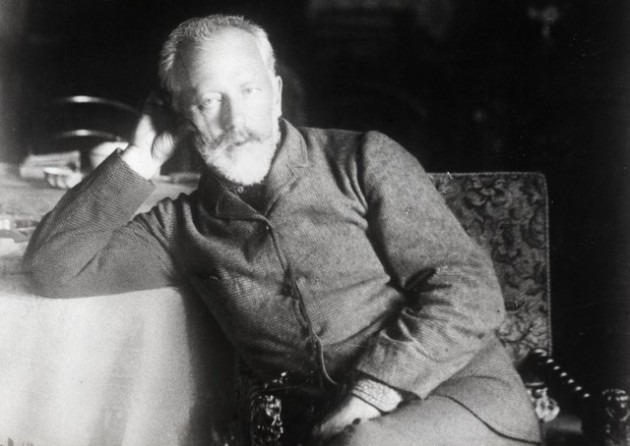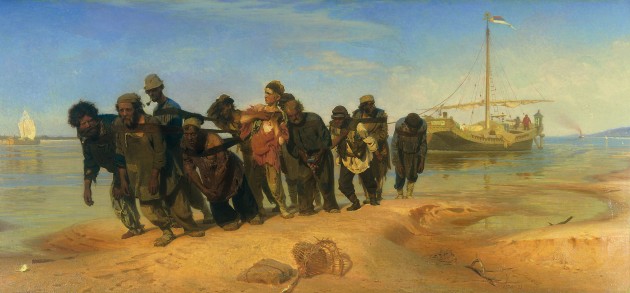Tchai Latte
There was a long gap in Tchaikovsky’s career in between the fourth and fifth symphonies due to the emotional crisis brought about by his ill-conceived marriage. However, during this period Tchaikovsky spent a great deal of time travelling and indulging in some orchestral experiments, some of which failed completely, while others are inventive and beautiful. Firstly there’s the sublime Serenade for Strings:
Serenade for Strings – 1st Movement – Andante no troppo
More interesting though are Tchaikovsky’s surprising and underrated orchestral suites, which avoid the restrictions of symphonic form by going back to much earlier traditions, before symphonies even existed, when orchestral music was really just a collection of dances. This approach proved hugely to be influential on several other composers, including Grieg, Respighi, Sibelius and Prokofiev. While I personally have a lot of time for the first three suites (particularly the zany scherzo from No. 2, which features four accordions playing in unison), it’s the fourth which is most remembered today. Tchaikovsky composed the suite in 1887, as a tribute to Mozart’s Don Giovanni, which had first been performed a century before, and appropriately enough, titled it “Mozartiana.” All of its movements are based on Mozart pieces, one famous, the other three less so, but all of them entertaining. The theme and variations is particularly interesting, showing off not only Tchaikovsky’s considerably gifts for orchestration, but also Mozart’s imaginative treatment of a melody by Gluck.
Mozartiana, 1st and 2nd Movements – Gigue / Menuetto
Mozartiana, 3rd Movement, Preghiera
Mozartiana, 4th Movement, Theme and Variations – Part 1
Mozartiana, 4th Movement, Theme and Variations – Part 2
Ballets Russes
You’d think by this point that we’d have exhausted Tchaikovsky’s store of famous works. But you’d be very much mistaken. Tchaikovsky’s three ballets, Swan Lake (the evil one), Sleeping Beauty (the underrated one), and The Nutcracker (the insanely Christmassy one from Fantasia) are all masterpieces. Listening to them all in their entirety would take you about seven hours. Fortunately, Tchaikovsky realised that even though they are brilliant throughout, they are quite long. Since not everyone can afford to be a purist about these things, he condensed them into a greatest hits format – one suite per ballet. These versions also have the considerable advantage of being completely ballet-free, so you don’t get distracted by lots of prancing about. Not only that, but I’ve made them into youtube playlists just for you.
If you listen to nothing else, make sure you hear The Waltz of the Flowers from the Nutcracker, which has to be one of the most joyful pieces of music ever written. Despite its apparent silliness, The Dance of the Sugar Plum Fairy is also groundbreaking in its use of the newly invented celesta, which has also been used by more recent musical luminaries.
Knowing the stories in these ballets is almost completely pointless. They are even sillier than the plots of operas, particularly as all three that Tchaikovsky wrote are based on fairy tales. However, the music is far from trivial. Until the arrival of Swan Lake, ballet music had largely been dominated by specialist dance composers who kept things simple and rhythmically clear. The only significant exception to this rule was one of Tchaikovsky’s inspirations – Delibes, whose two ballets Coppélia and Sylvia are some of the only other really great works in this genre, until Stravinsky, Khachaturian and Prokofiev turned up. Tchaikovsky’s explorations in ballet gave this area of composition a new level quality, both in serious musical terms and entertainment value. The characteristic dances from The Nutcracker in particular are a triumph of silliness.
Chamber Made
Tchaikovsky didn’t write many chamber pieces (music composed for two or more players in a small ensemble), but when he did, he got it absolutely right. As I already mentioned, Tchaikovsky was not keen on combining the piano with string instruments, which explains his dislike of Brahms, but makes his love of Schubert very confusing. Nevertheless, when his friend and mentor Nikolai Rubinstein died in 1881, Tchaikovsky was devastated, and at the same time shocked out of his compositional malaise. Prompted by Madame von Meck, he composed a piece for his least favourite combination of instruments, a trio of piano, violin and cello. Despite his distaste for this blend of sounds, he produced a stunning masterpiece of unparalleled emotional scope. The final movement in particular is one of the most intense pieces he, or anyone else (yes, even Beethoven) ever wrote. The work overflows with a profusion of melodic ideas, as if all the inspiration Tchaikovsky had kept bottled up in the preceding years had suddenly been released. It is an unusually long work for its type, and the piano part is known for its technical challenges, but it is well worth the effort.
Piano Trio, Movement 1 – Pezzo elegiaco, part 1
Piano Trio, Movement 1 – Pezzo elegiac, part 2
Piano Trio, Movement 2A – Theme and Variations, part 1
Piano Trio, Movement 2A – Theme and Variations, part 2
Piano Trio, Movement 2B – Final Variation and Coda
As if this wasn’t enough, Tchaikovsky also managed to stumble into writing a brilliant string quartet, a piece so moving that it made Tolstoy cry. Apparently. The second movement in particular has become incredibly famous because of its catchy main theme, which Tchaikovsky adapted from a folk song he heard from a carpenter who was working at his country retreat. It also bears an uncanny resemblance to another very famous tune, the stirring “Song of the Volga Boatmen.”
String Quartet No.1 – 1st Movement – Moderato e semplice
String Quartet No.1 – 2nd Movement – Andante Cantabile
String Quartet No.1 – 3rd Movement – Scherzo
String Quartet No.1 – 4th Movement – Finale: Allegro giusto
Not quite content to write for a measly four string instruments, Tchaikovsky later challenged himself with a string sextet (stop giggling) entitled “Souvenir de Florence” – another reminiscence of his many Italian voyages. However, the piece also uses some rather manic and distinctly Russian themes in its last two movements. The “Souvenir” is yet another of Tchaikovsky’s more passionate works.
Souvenir de Florence – 1st Movement – Allegro con spirito
Souvenir de Florence – 2nd Movement – Adagio cantabile
Souvenir de Florence – 3rd Movement – Allegretto moderato
Souvenir de Florence – 4th Movement – Allegro vivace
Also well-worth a listen is the appropriately named “Melodie” from the “Souvenir d’un lieu cher,” which was created in Switzerland from discarded parts of the violin concerto.
Souvenir d’un lieu cher – 3rd Movement – Melodie
The Opera House
Tchaikovsky spent a great deal of time writing operas – eleven of them in all – but most are forgotten today, and not without reason. However, two of his efforts in this genre are still performed – Eugene Onegin and The Queen of Spades, both based on stories by Pushkin. While I can’t pretend to be a huge fan of these works, especially when compared to last month’s operas, there are a number of highlights that are definitely worth hearing. Here’s the Letter Scene from Eugene Onegin, which has strange parallels with Tchaikovsky’s own marriage (skip to 4:15 for the good bit):
For no apparent reason, there are also a couple of great dance numbers in Eugene Onegin – here are the Waltz and the Polonaise:
Waltz:
Polonaise:
And the stand out moment in The Queen of Spades has to be this, Prince Yeletsky’s aria, “Ja vas lyublyu” – Russian for “I love you”:
Sweet Tchild o’ Mine
And that’s everything. Tchaikovsky also wrote a fair amount of solo piano music, and charming as some of it is, you’d be better off investigating a few of the other virtuoso pianists of the nineteenth century first. However, the distinctly Schumannesque cycle of piano pieces “The Seasons” certainly has its moments. You can find the most famous movements (the June Barcarolle and the November Troika) for yourself, but a much nicer way to get a flavour of the whole set is through one of the many treasures of Russian animation:
And if the music just isn’t enough, why not listen to Tchaikovsky’s voice?
Other Classicals:
#1 – Roll Over Beethoven: An Introduction to Beethoven
#2 – Rock Me Amadeus: An Introduction to Mozart
#4 – Schubert Dip: An Introduction to Schubert
#5 – Bach To The Future: An Introudction to Bach





